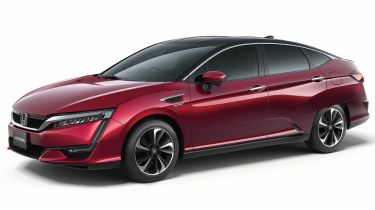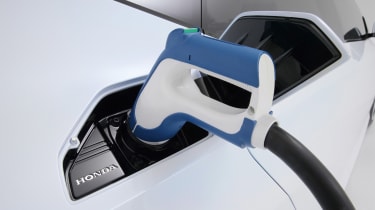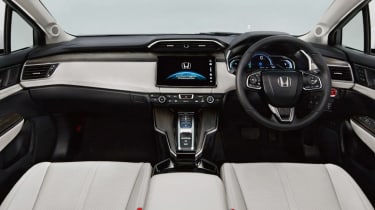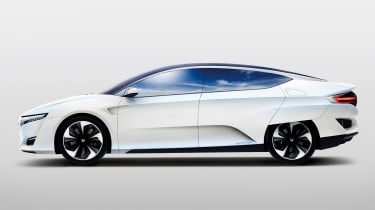Honda Clarity Fuel Cell: prices, specs and release date
New hydrogen fuel-cell family hatch makes European debut at Geneva Motor Show
Honda is no stranger to hydrogen fuel cells – its (and the world’s) first production fuel-cell car, the Honda FCX Clarity, was originally released in California over seven years ago.
But with Toyota and Hyundai entering the hydrogen fray with the Toyota Mirai and Hyundai ix35 Fuel Cell respectively, a successor to the Honda FCX is on the way – and this time it’s coming to the UK. It has made its European debut at this year's Geneva Motor Show, just three months after starring at the Tokyo Show.
Though the production-ready version of the upcoming Honda Clarity FCV is still some way off, here are all the details we know on Honda’s second attempt at a family-friendly hydrogen fuel-cell car.
Fuel cell technology, mpg and range
Perhaps the best way to explain how the hydrogen fuel-cell system works in cars like the Honda Clarity FCV is to say it’s an electric car that needs to be filled up with a fuel (in this case, compressed hydrogen) like a petrol or diesel car. The driven wheels are powered by an electric motor, but the power comes from mixing oxygen with the hydrogen that’s stored in the car’s fuel cells – rather than from batteries like in normal electric cars.
As a result, fuel-cell cars in theory have all the positive qualities of electric cars (instant power, no engine noise, zero emissions, etc.) while also promising a driving range more in line with what you’d expect from a petrol or diesel vehicle. But the latter point will only really apply once there are enough hydrogen filling sites across the UK to make fuel-cell cars viable.
However, Honda is still satisfied that its Clarity FCV will be an appealing ownership prospect. For example, as its tailpipe emissions are zero (the only waste product of the oxygen/hydrogen reaction is water), the Honda Clarity Fuel Cell is currently exempt from road tax and the London Congestion Charge.
A claimed power output of 134bhp should also give the Honda Clarity a decent turn of speed. Though that doesn’t sound like much, all the power is instantly accessible from the moment you put pressure on the accelerator.
Honda is also proud of the way it’s packaged the Clarity’s fuel cells and electric motor. Unlike the Honda FCX Clarity, which stored its fuel cells in the floor, the Honda FCV’s are fitted up front in the space that would usually be taken up by the engine in a conventional car.
Official fuel consumption figures aren’t known yet, but Honda does claim the Clarity has a maximum cruising range of around 435 miles. In comparison, the Toyota Mirai only has a range of around 300 miles.
It’s also unknown how big the Clarity’s hydrogen tanks will be, although Honda has stated they’ll take three minutes to fill up from empty – exactly the same as the Toyota Mirai.
Interior
Thanks to the packaging of the fuel cells, the Honda Clarity FCV should in theory have a pretty spacious cabin. Honda even goes as far as to say that five adults can sit in the car “comfortably” – which, if true, gives it an added advantage over the four-seater Mirai.
No details on the Clarity’s boot capacity are known yet, although we expect it to be a fairly good size. With all the fuel cells fitted in the front, there’s no need for Honda to compromise space by shoehorning them into the cabin.
Judging by the single image of the interior we’ve been given, the Honda Clarity appears to have a pleasantly designed and built dashboard. Given the lack of buttons on the centre console, we presume the massive centre display is a touchscreen. The readout in the dashboard binnacle also appears to be a fully digital job – not that different to the one in the Honda FCX Clarity.
Styling
Though perhaps not quite as striking as the Toyota Mirai or the Honda FCX Clarity, the Honda Clarity FCV still looks very different to most cars on sale today (and certainly any current Honda model).
For instance, the rear wheelarches are partially covered (presumably to reduce aerodynamic drag), and what appear to be L-shaped daytime running lamps that frame the front bumper top off what is a very pronounced front-end design.
Other styling cues suggest Honda has also been ensuring the Clarity cuts through the air as cleanly as possible. Strakes in the wheel spokes serve to draw air out of the wheelarches and outside the car, where those sharp creases in the bodywork can then direct it towards the rear of the car.
We haven’t been provided with any images on the rear of the Honda Clarity, so we won’t know how it looks at the back until the Tokyo Motor Show. However, as quite a few cues from the Honda FCV Concept seen earlier this year have made it onto the road car, we wouldn’t be surprised if the horizontal rear lights and large rear air vents have also been carried over.
Specifications
The full spec list for the Honda Clarity FCV has yet to be revealed, but what can be seen in the official photos does give us an idea of what to expect. Beyond the obvious items like the large centre display screen, it also seems the car will be fitted with features like climate control. It’s expected that more concrete information will be disclosed at next week’s Tokyo Motor Show.
A closer look at the Clarity’s interior reveals what appears to be wood trim on the door armrests and around the drive selector. Given the eco-friendly credentials of the Honda Clarity FCV (and assuming the wood isn’t fake), we wouldn’t be surprised to learn that trim comes from recycled material.
It’s also been stated that the Honda Clarity FCV can be used as a “mobile power generator”. Once it’s hooked up to its bespoke ‘Power Exporter’, the car can be used to recharge electric gadgets and even work as a backup generator in the event of power cuts. However, Honda hasn’t stated if all Claritys will come with this function as standard and it’s unlikely to be offered outside of Japan.
Prices and release date
Honda has yet to officially state a release date for the Clarity FCV in the UK, but our sister title Auto Express reckons the production-ready car should arrive on our shores sometime in 2017.
Prices are also an unknown at this point, although it’ll probably be pretty steep – especially when the Clarity FCV’s closest competitor, the Toyota Mirai, costs £66,000 to buy brand new.
As the Honda FCX Clarity was available in the US on a $300-a-month lease, it’s possible that Honda might offer a similar deal for the Clarity FCV.
Recommended

New Honda Prelude gets Civic-inspired interior in latest pictures
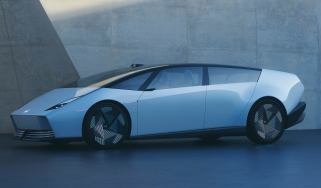
Honda 0 Series revealed: saloon and SUV kick off new EV era for Honda
Most Popular

Omoda E5 targets rivals: now with zero deposit and APR
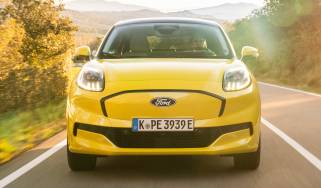
Ford Puma Gen-E driven: Electric charmer or too little, too late?
Tips & advice

Car dashboard warning lights: what does each symbol mean?

Electric car charging stations: public networks, charger types, apps and maps

